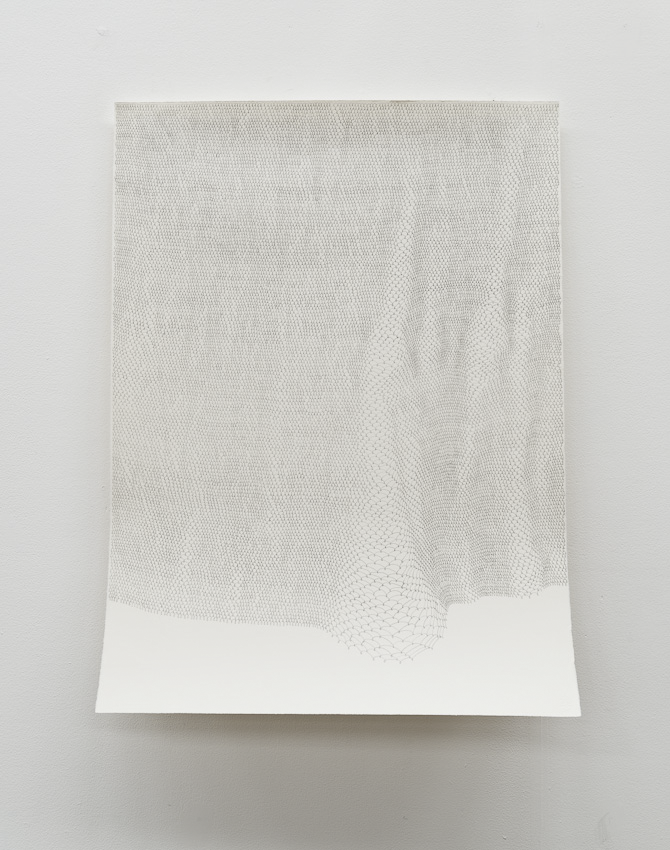The process starts as a even looped mark translating the process of netting into a pencil line. I allow my thoughts to wander as I build up a rhythm of working, just as I would if I were stitching. I am held in the repetitive act. I am intrigued by the subtle variations that occur, when my hand gets tired, when the lead gets blunt, when I have almost reached the end of the page working line after line, into the line before, responding to the line before. There are times when the looped line condenses and waves of movement are captured in the still lines of the lead pencil. The lines give the illusion of netting itself with the potential to expand and contract, to breathe.
While the repetitive nature of textile processes employed in both Aboriginal and non-Aboriginal fibre art were not initially a major point of focus, through the activity of drawing they became visible. In the movement from weaving to drawing to stitching, repetition shifted from being something that was inevitable and unconsidered, to becoming central and intentional. In attempting to translate the repetitive basketry forms through drawing I discovered a way of drawing that is akin to the repetitive nature of stitching. This opened a space for my practice in the territory of drawing. I began to contextualize my practice between textiles and drawing.
This discovery provoked me to embark on a series of investigations applying what I had discovered in the act of drawing to the process of stitching. What might happen if I approached stitching from the perspective of drawing? The nuances and subtleties of the mark became important. Subtlety in the stitched or woven mark is what interests me in textiles. A repetitive practice is also something that I am familiar with through my textile background but I had not previously explored it in traditional drawing mediums. I also discovered a parallel between repetitive stitching and repetitive mark making with pencil or ink. I approached the drawing as if I were stitching.
This body of work began with an interest in Aboriginal basketry. Through drawn investigations into baskets I made in workshops I came to understand my fascination with the repetitive lines of the baskets and the repetitive acts in the making of the baskets. Through these investigations I developed a different language. I created a space between my own life experience and the history and tradition of these techniques; a space in which to ponder the question of how to relate to Aboriginal weaving as a non-Aboriginal artist.






